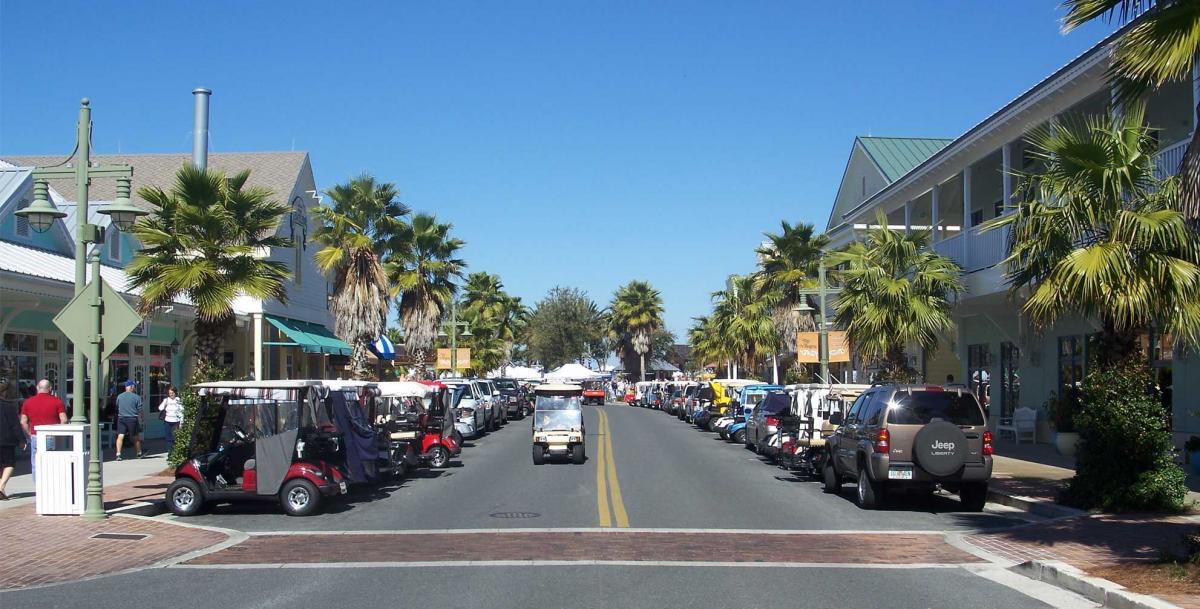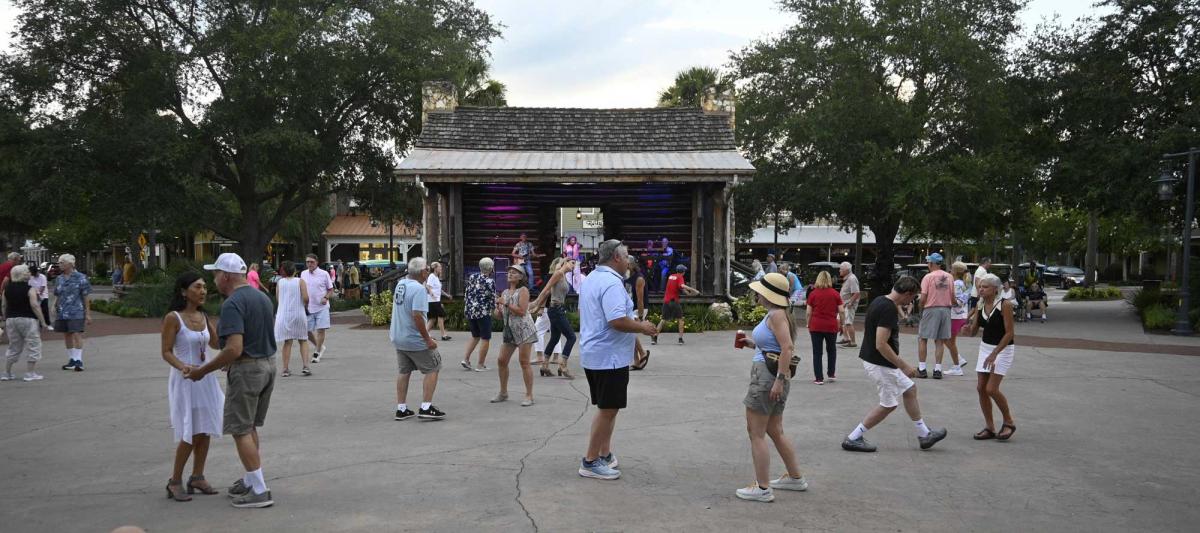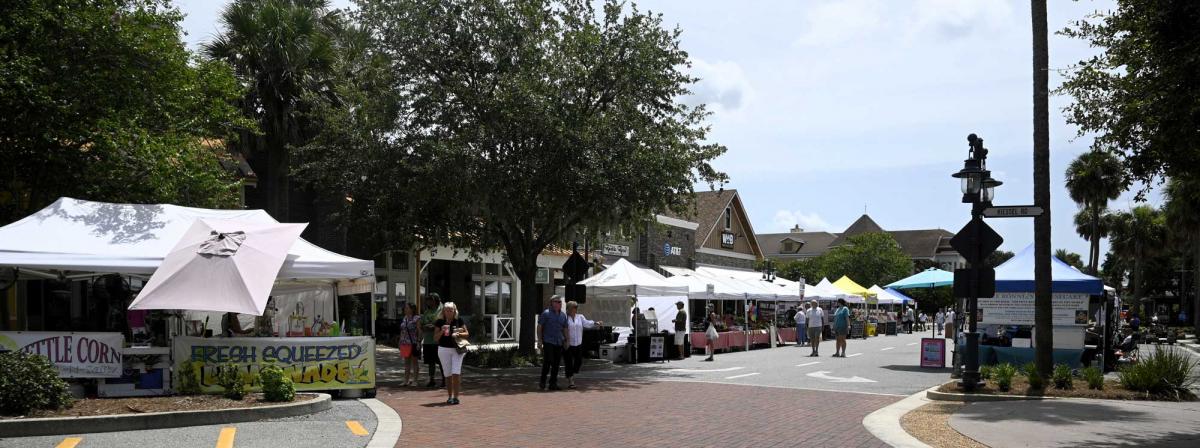
What New Urbanists can learn from The Villages
Note: Fernando Pages Ruiz and Andres Duany will discuss lessons from the Villages in an On the Park Bench webinar on July 15, at 12 noon ET.
The Villages, Florida, is the fastest-growing metropolitan area in the United States. That fact alone should prompt attention from planners. But there’s a deeper reason New Urbanists should study it: The Villages has managed to create what New Urbanism has long aspired to but rarely achieved—authentic, joyful, daily community life.
Let’s start with a few inconvenient facts. The Villages is not walkable in the traditional sense. You won’t find corner stores every 500 feet or narrow streets framed by architecturally significant buildings. You’ll see golf carts, cul-de-sacs, and miles of looping roads. But what you’ll also see—what hits you square in the chest—is life. People moving, talking, laughing, dancing, exercising, and socializing. Public space is used here not because it’s beautiful, but because people have the time and desire to use it. And because it was designed with the end use—not the form—in mind.
I spent four days there on a Lifestyle Preview. My villa came with two bikes and a golf cart. There wasn’t much to walk to on foot—just more houses. But within three minutes by cart or bike, I reached a recreation center and the town square. In The Villages, the five-minute city doesn’t exist at 3 mph—it exists at 20. And that shift in thinking changes everything.

Every day in The Villages is filled with accessible activities. You might start with a bike ride, hit the gym, park your cart, and walk to lunch at the square, swim laps at the pool, then dress up for an evening of live music and dancing. This isn’t hypothetical—it’s the norm. Social connection isn’t aspirational here. It’s a given.
The environment fosters it. Strangers smile, wave, start conversations with a simple “Where are you from?” and then talk for half an hour. Why? Two reasons. One, people are happy. The environment makes it so. Even the most dedicated New Urbanist cannot help but feel it. Two, people have time. And that’s the secret sauce New Urbanism often overlooks: design doesn’t drive behavior alone. It enables it when paired with lifestyle patterns that support sociability.
Researchers are starting to catch up with what residents already know. A 2024 study by Su-I Hou and Khristen Holmes found that older adults in Florida “village” communities reported high levels of physical activity, strong social relationships, and increased life satisfaction. They averaged 4.2 days per week of 30-minute physical activity. More importantly, high scores in physical fitness and friendship were both strongly linked to high social engagement. And engagement matters. It extends lifespan and health span. In the study, older adults who volunteered or maintained friendships had better outcomes across the board.
That might help explain a strange phenomenon we experienced. After four days of this lifestyle, arriving at the airport was jarring. No one smiled. No one waved. The world had returned to normal. But The Villages felt more real. Humane, easygoing, full of small joys.

This is where New Urbanists might stop and reflect. We’ve placed great faith in physical form—block structures, setbacks, terminated vistas, “eyes on the street.” These are good ideas. But they do not, on their own, produce neighborliness. Nor do they spark joy. The Villages gets to something more profound. It provides seniors (and visiting young people) a place to feel good in their bodies and unafraid in their skin. They dance. They flirt. They talk. Not because of excellent planning. Because the environment invites it.
And what about beauty? The architecture of The Villages is forgettable at best. It mimics a kind of Main Street nostalgia with a Disney gloss. But people love it. The town squares aren’t masterpieces of civic design. They’re themed spaces filled with music, bars, restaurants, and movement. They succeed not as form, but as function. They’re fun.

Affordability is another point worth noting. While many New Urbanist developments have become enclaves for the affluent, The Villages offers new homes starting at $200,000. Not subsidized. Just affordable by design. That’s another lesson.
We stayed in Eastport, the latest expansion. Within a six-minute car ride, we reached four recreation centers, a driving range, five golf courses, a health center, a hotel, courts for every sport, eleven lakes, and the town square. Add to that a multi-modal trail system that connects all properties. That’s not urbanism. However, it is access, and access to inviting events (as opposed to beautiful buildings) fosters activity.

New Urbanism’s original promise was to design places where people would know their neighbors, gather often, and live more connected lives. The Villages has achieved that—not through form, but through lifestyle. It’s not a beautiful place, but it’s full of beauty in use. It’s not urban, but it functions socially better than many cities. It doesn’t have great architecture, but it has great evenings.
We should study it, not to replicate its aesthetics, but to understand what makes it work. We’ve spent decades perfecting the block. Maybe it’s time to focus on the block party.




